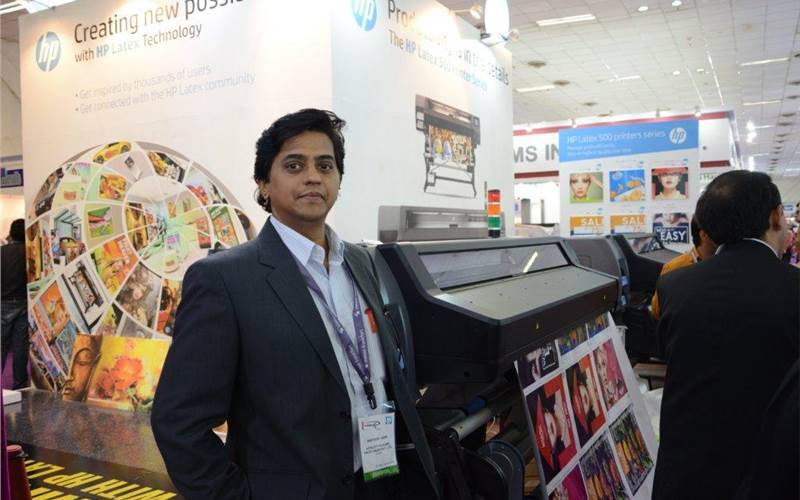HP adds the Latex 500 series to its product bouquet
HP launched the Latex 500 series, which included the Latex 560 and Latex 570 printers at the show, though the two printers were introduced to a bunch of print service providers (PSP) at an event held in Mumbai on 24 September 2016.
07 Oct 2016 | By Noel D'Cunha
The two new seven-colour 64-inch printers can print a speeds of up to 23 sqm/hour (248 sqft/hour at indoor mode for “cost effective production” of high-quality jobs at high-quality jobs.
Santosh Nair, country category manager for sign and display HW at HP graphics solution business PPS at HP said, “The 500 series is an extension of our current portfolio, primarily aimed at making the customers more profitable as well as accelerate growth.”
Both the printers are fitted with HP 831 Latex printheads capable of delivering 1,200 dpi native resolution, a spectrophotometer for colour consistency, wiper roller that takes care of old or unused media, a spindleless system for quick media loading and unloading, and an ink opitimiser that immoblises pigments on the surface of the print.
Combined with the third-generation ink is the condensation feature, Nair said, the PSPs can use of any kind of media under any environment. “Today, Latex inks can print on any substrates. Flex has become a no-brainer on these machines now.”
The Latex 560 is placed as an entry-level model for someone who wishes to enter diverse markets, where the reach is endless, while the Latex 570 with a 21-litre ink system, is aimed at those who have a fleet of printers, but would turn down jobs during peak festive seasons. These machines are capable of printing on textile, leather, self-adhesive vinyl (SAV), and canvas among others.
“The Latex 570 is not an entry-level because there’s an investment of close to 21 liters of ink at the beginning itself. This printer is for someone who has a fleet of machine, add this, take away lots of load of the existing machines, do the entire SAV on this machine non-stop in production mode,” said Nair.
Today, there are times when brands need delivery of high-quality print in quick time. This becomes the biggest challenge for the PSPs, because high-resolution prints are generally slow. With these two machine, we have tried to push that limit, that will allow the PSPs to achieve 50-60% of the target in a given time,” said Nair. “A latex print does not need drying for lamination; you can print and straight laminate it. For PSPs, delivery time is speed.”













 See All
See All